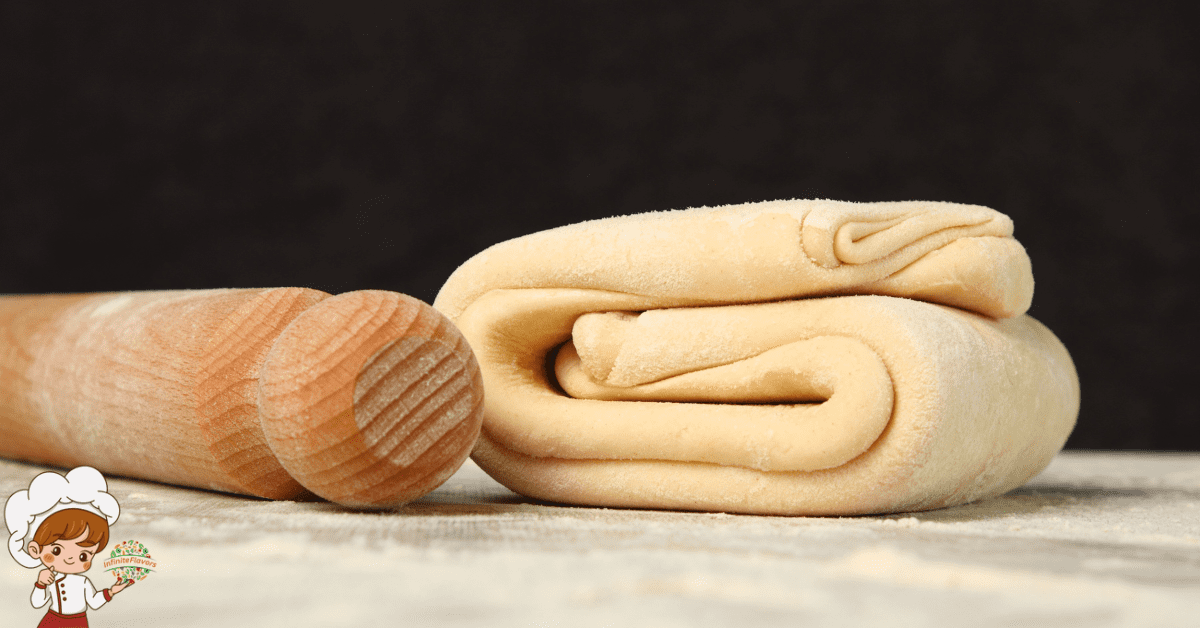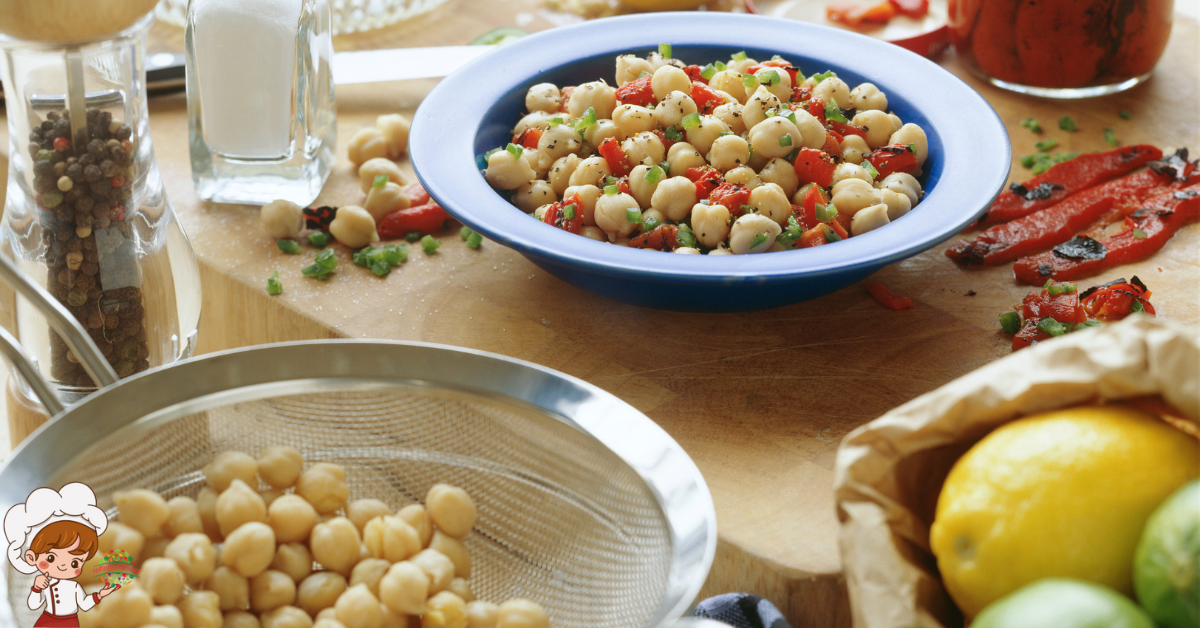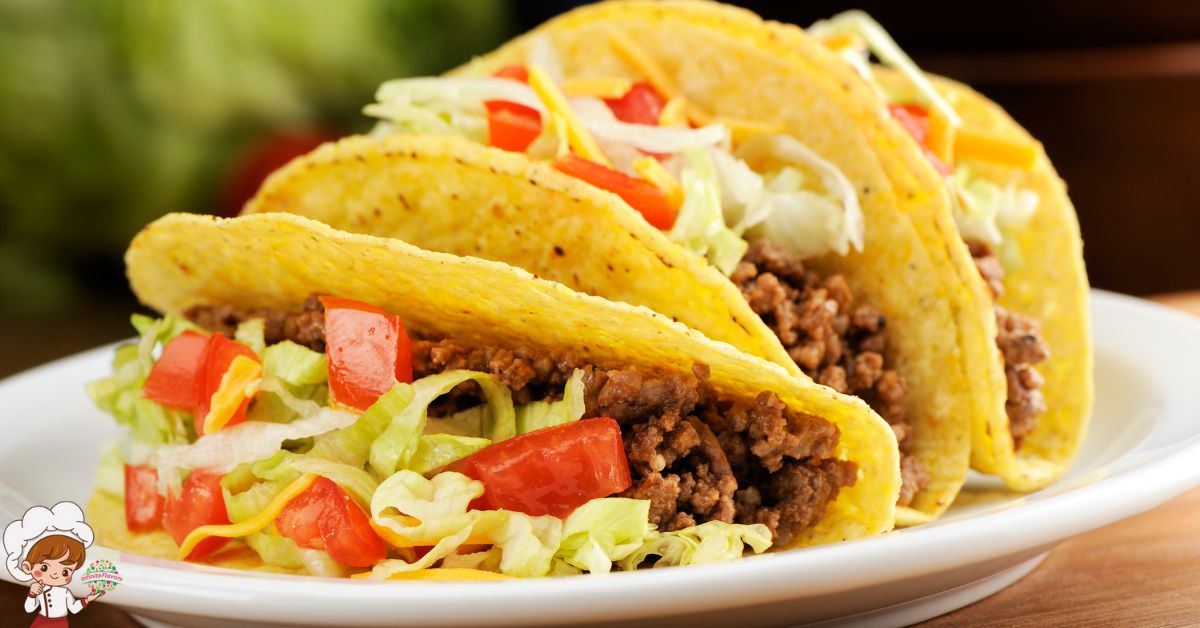How To: 15 Ingredient Swaps For Pastry Making

Ingredient Swaps For Pastry; Have you ever wondered if there are healthier ingredient swaps you could make when it comes to pastry making? Well, the good news is that there are plenty of options available to you. By making a few simple substitutions, you can create pastries that are not only delicious but also better for your health.
From using butter alternatives to incorporating whole wheat flour and Greek yogurt, these swaps can help reduce the amount of unhealthy fats and refined sugars in your pastries. But that’s not all, there are even more surprising swaps to discover that can transform your favorite treats into guilt-free indulgences. So, why settle for traditional ingredients when you can explore a whole new world of healthier alternatives?
Butter Alternatives
If you’re looking to make your pastries healthier, consider using butter alternatives that are lower in saturated fat and cholesterol. One great alternative to butter is avocado. Avocado can be used in baking as a substitute for butter, providing a creamy texture and a rich flavor. Not only does avocado add a unique taste to your pastries, but it also offers several health benefits. Avocados are a good source of healthy monounsaturated fats, which can help lower bad cholesterol levels and reduce the risk of heart disease. They are also packed with vitamins and minerals, including potassium, vitamin K, vitamin E, and vitamin C. Additionally, avocados are high in fiber, which can aid in digestion and promote satiety.
Another butter alternative worth considering is coconut milk. Coconut milk can be used in baking to add moisture and richness to your pastries. It is lower in saturated fat compared to butter and contains medium-chain triglycerides (MCTs), which are easily converted into energy by the body. These MCTs have been shown to have several health benefits, including improving brain function and promoting weight loss. Coconut milk is also a good source of vitamins and minerals, such as iron, magnesium, and potassium.
When using avocado or coconut milk as butter alternatives, it is important to consider their unique flavors and adjust your recipe accordingly. Experimenting with different ratios and substitutions can help you achieve the desired taste and texture in your pastries. So, why not give these butter alternatives a try and make your pastries healthier without compromising on flavor?
Sugar Substitutes
Looking for healthier options to sweeten your pastries? There are several sugar substitutes available that can help you reduce your sugar intake without sacrificing taste. Healthier sweeteners such as stevia, monk fruit, and coconut sugar are natural alternatives to refined sugar. Additionally, low-glycemic sweeteners like agave nectar and maple syrup can provide sweetness with a lower impact on blood sugar levels.
Healthier Sweeteners
To make your pastries healthier, consider swapping out traditional sugar for alternative sweeteners. Healthier sweeteners offer several benefits over regular sugar while still providing sweetness to your baked goods. One of the main advantages is that they have a lower glycemic index, which means they cause a slower rise in blood sugar levels. This can be beneficial for individuals with diabetes or those looking to manage their blood sugar levels.
Additionally, natural sweeteners like honey, maple syrup, and coconut sugar contain trace amounts of vitamins and minerals, adding some nutritional value to your treats. However, it’s important to note that these sweeteners may still contribute to calorie intake and should be used in moderation. When incorporating natural sweeteners into baked goods, it’s recommended to adjust the recipe accordingly as they can affect the texture and moisture content.
Natural Sugar Alternatives
Consider swapping out traditional sugar for natural sugar alternatives to make your pastries healthier. Natural sugar alternatives not only provide a sweet taste but also come with several health benefits. Here are some tips for using low glycemic sweeteners:
- Stevia: This plant-based sweetener has zero calories and a low glycemic index. It can be used in baking as a replacement for sugar, but be sure to follow the recommended conversion ratios as it is much sweeter than sugar.
- Coconut sugar: Made from the sap of coconut palm trees, coconut sugar is a natural sweetener that contains small amounts of nutrients like iron, zinc, and potassium. It has a lower glycemic index than regular sugar and can be used in a 1:1 ratio for most recipes.
- Raw honey: Honey is a natural sweetener with antibacterial and antioxidant properties. It can be used to sweeten pastries while adding moisture and flavor. However, keep in mind that it is still high in calories, so use it in moderation.
Low-Glycemic Sweeteners
When it comes to making your pastries healthier, one key aspect to consider is the use of low-glycemic sweeteners as substitutes for traditional sugar. Low glycemic sweeteners, such as coconut sugar, stevia, and monk fruit extract, have gained popularity due to their ability to provide sweetness without causing a rapid spike in blood sugar levels. This is particularly beneficial for individuals with diabetes or those looking to manage their blood sugar levels.
In addition to their low glycemic index, these sweeteners often contain antioxidants and nutrients not found in regular sugar. However, it is important to note that low glycemic sweeteners may still contribute to calories and should be consumed in moderation. When incorporating low glycemic sweeteners into everyday baking, it is advisable to follow specific conversion charts or recipes to ensure the right balance of sweetness and texture in your pastries.
Whole Wheat Flour
Using whole wheat flour in your pastry recipes can provide added nutritional benefits without sacrificing taste or texture. Whole wheat flour is made from the whole grain, including the bran, germ, and endosperm, which gives it a higher fiber content compared to refined flour. This makes it a healthier choice for your pastries. Here are three reasons why you should consider using whole wheat flour in your recipes:
- Increased Fiber Intake: Whole wheat flour contains more fiber than refined flour. Fiber is essential for maintaining a healthy digestive system and can help regulate blood sugar levels. By using whole wheat flour, you can increase your fiber intake and promote better overall health.
- Improved Nutrient Profile: Whole wheat flour retains more nutrients compared to refined flour. It is a good source of essential vitamins and minerals, including B vitamins, iron, and magnesium. These nutrients are important for energy production, immune function, and maintaining healthy blood cells.
- Enhanced Flavor and Texture: Contrary to popular belief, using whole wheat flour doesn’t mean sacrificing taste or texture in your pastries. It adds a slightly nutty flavor and a denser texture, which can enhance the overall enjoyment of your baked goods. Many people find that the heartier taste of whole wheat flour adds depth to their recipes.
Nut Flours
Nut flours offer a nutritious and flavorful alternative to traditional wheat-based flours in pastry making. Made from ground nuts, such as almonds, walnuts, or cashews, nut flours provide a range of health benefits. They are rich in healthy fats, protein, and fiber, making them a great choice for those looking to add nutritional value to their baked goods.
One of the main health benefits of nut flours is their high content of healthy fats. These fats, such as monounsaturated and polyunsaturated fats, are known to promote heart health and reduce the risk of cardiovascular diseases. Nut flours also contain protein, which is essential for muscle repair and growth. Additionally, they are a good source of fiber, which aids in digestion and helps maintain a healthy weight.
When baking with nut flours, there are a few tips to keep in mind. First, it’s important to note that nut flours have a different texture and moisture content compared to wheat-based flours. This means that recipes may need to be adjusted accordingly. Adding extra moisture, such as eggs or oil, can help prevent dryness in the final product.
It’s also important to be mindful of the flavor profile when using nut flours. While the nutty taste can be a delightful addition to pastries, it may not pair well with all flavors. Experimenting with different combinations of ingredients can help you find the perfect balance.
Greek Yogurt Instead of Sour Cream
Greek yogurt is a healthier alternative to sour cream in pastry making. Not only does it provide a similar creamy texture and tangy flavor, but it also offers several health benefits. Here are three reasons why using Greek yogurt in baking is a smart choice:
- Reduced Fat Content: Greek yogurt is lower in fat compared to sour cream. By swapping sour cream with Greek yogurt, you can significantly reduce the overall fat content of your pastries without sacrificing taste or texture. This can be particularly beneficial for those watching their calorie intake or trying to maintain a healthier diet.
- Increased Protein: Greek yogurt is packed with protein, making it a nutritious addition to your baked goods. Protein is essential for building and repairing tissues, promoting satiety, and supporting overall health. By using Greek yogurt in your pastry recipes, you can boost the protein content and make your treats more satisfying.
- Probiotics for Gut Health: Greek yogurt contains live and active cultures, including beneficial bacteria called probiotics. These probiotics can help improve digestion, support a healthy gut microbiome, and enhance nutrient absorption. Incorporating Greek yogurt into your baking can be a tasty way to introduce probiotics into your diet and promote better digestive health.
Coconut Milk for Regular Milk
To continue making healthier ingredient swaps in pastry making, consider using coconut milk as a substitute for regular milk. Coconut milk offers numerous health benefits and can be a great addition to your baking repertoire.
One of the main advantages of using coconut milk is its high nutrient content. It is rich in vitamins C, E, and B-complex, as well as minerals like iron, calcium, and magnesium. These nutrients contribute to overall health and can help boost your immune system.
Additionally, coconut milk is lactose-free and suitable for those with lactose intolerance or dairy allergies. It is also a good option for vegans or individuals following a plant-based diet.
When using coconut milk in pastry recipes, there are a few cooking tips to keep in mind. First, shake the can well to ensure the milk is fully mixed before using. Coconut milk tends to separate, with the cream rising to the top. Mixing it well will ensure a consistent texture in your baked goods.
Second, coconut milk has a distinct flavor that can add a tropical twist to your pastries. It pairs well with flavors like chocolate, lime, and pineapple. Experiment with different combinations to find the perfect balance of flavors.
Lastly, coconut milk can be used in equal amounts as regular milk in most recipes. However, it is slightly thicker, so you may need to adjust the consistency of your batter or dough by adding a little more liquid if necessary.
Honey Instead of Corn Syrup
Consider swapping out corn syrup for honey to make your pastries healthier and more flavorful. Honey is not only a natural sweetener but also offers several health benefits. Here are three reasons why you should start cooking with honey:
- Rich in Antioxidants: Honey contains various antioxidants that can help protect your body against oxidative stress and inflammation. These antioxidants have been linked to a reduced risk of heart disease, certain types of cancer, and other chronic conditions.
- Nutrient-Rich: Unlike corn syrup, honey is packed with essential nutrients. It contains small amounts of vitamins and minerals such as vitamin C, calcium, and potassium. While these amounts may be small, every little bit counts towards a healthier diet.
- Better Glycemic Index: Corn syrup is known for its high glycemic index, meaning it can cause a rapid rise in blood sugar levels. On the other hand, honey has a lower glycemic index, which means it is absorbed more slowly, causing a steadier and more gradual increase in blood sugar levels.
When cooking with honey, keep in mind that it is sweeter than corn syrup, so you may need to adjust the amount used in your recipes. Replace each cup of corn syrup with ¾ cup of honey and reduce the liquid in the recipe by ¼ cup. Additionally, honey may cause your baked goods to brown more quickly, so keep an eye on your pastries while they’re in the oven.
Unsweetened Applesauce for Oil
Did you know that unsweetened applesauce can be a healthier alternative to oil in your pastry recipes? Not only does applesauce provide a natural sweetness, but it also adds moisture to your baked goods. Additionally, using applesauce instead of oil can significantly reduce the overall fat content in your pastries. So next time you’re baking, consider swapping out oil for unsweetened applesauce for a healthier twist on your favorite treats.
Health Benefits of Applesauce
Using unsweetened applesauce as a substitute for oil in pastry recipes can offer numerous health benefits. Here are some reasons why incorporating applesauce into your baking can be a healthy choice:
- Reduced fat content: Applesauce contains significantly less fat than oil, making it a healthier option for those watching their fat intake.
- Increased fiber: Applesauce is a good source of dietary fiber, which promotes digestive health and helps to regulate blood sugar levels.
- Added nutrients: Applesauce is packed with vitamins and minerals, including vitamin C and potassium, which can contribute to overall health and well-being.
When using applesauce as a substitute for oil in your pastries, keep these tips in mind:
- Measure accurately: Use a 1:1 ratio when replacing oil with applesauce to ensure the right balance of moisture in your baked goods.
- Choose unsweetened: Opt for unsweetened applesauce to avoid added sugars and unnecessary calories.
- Experiment with flavors: Consider using flavored applesauce, such as cinnamon or berry, to add a hint of extra flavor to your pastries.
Tips for Using Applesauce
To ensure successful substitution of unsweetened applesauce for oil in your pastry recipes, follow these helpful tips. When using applesauce in baking recipes, it is important to remember that it can add moisture and flavor to your pastries while reducing the fat content. First, replace oil with applesauce in a 1:1 ratio. This means that if a recipe calls for 1/2 cup of oil, use 1/2 cup of applesauce instead. Second, reduce the amount of sugar in your recipe since applesauce adds natural sweetness.
Start by reducing the sugar by 1/4 cup and adjust according to your taste preferences. Finally, keep in mind that using applesauce may result in a slightly denser texture, so consider adding an extra leavening agent like baking powder to compensate. By following these tips, you can enjoy the health benefits of applesauce while still creating delicious pastries.
Almond or Cashew Butter Instead of Peanut Butter
Almond or cashew butter serves as a nutritious alternative to peanut butter in pastry making. Not only do these nut butters add a rich and creamy flavor to your pastries, but they also come with a range of health benefits. Here are three reasons why you should consider using almond or cashew butter instead of peanut butter in your next baking adventure:
- Almond butter vs. cashew butter: Both almond butter and cashew butter are excellent substitutes for peanut butter. While almond butter has a slightly nuttier and richer taste, cashew butter offers a creamier and smoother texture. The choice between the two ultimately depends on your personal preference and the desired flavor profile of your pastries.
- Health benefits of almond butter: Almond butter is packed with essential nutrients. It is an excellent source of healthy fats, including monounsaturated fats, which are beneficial for heart health. Almond butter is also rich in vitamin E, which acts as an antioxidant and helps protect against cell damage. Additionally, almond butter provides a good amount of protein, fiber, and minerals such as magnesium and potassium.
- Dietary considerations: Almond butter and cashew butter are suitable for various dietary needs. They are naturally gluten-free, making them a great option for individuals with gluten sensitivities or celiac disease. Moreover, almond butter and cashew butter are low in carbohydrates, making them suitable for those following a low-carb or keto diet. However, it’s important to note that nut butters are calorie-dense, so portion control is key.
Avocado as a Butter Replacement
If you’re looking for a healthier alternative to butter in your pastries, consider using avocado. Avocado is a versatile fruit that not only adds a creamy texture to your baked goods but also provides numerous health benefits.
Avocado is known for its high content of monounsaturated fats, which are considered heart-healthy fats. These fats can help reduce bad cholesterol levels and lower the risk of heart disease. Additionally, avocados are packed with vitamins and minerals, including potassium, vitamin K, vitamin E, and vitamin C.
When using avocado as a butter replacement in baking, there are a few tips to keep in mind. First, make sure to use ripe avocados that are soft to the touch. This will ensure a smooth and creamy texture in your pastries. Mash the avocado well to eliminate any lumps before adding it to your recipe.
You can substitute avocado for butter using a 1:1 ratio. For example, if a recipe calls for 1 cup of butter, use 1 cup of mashed avocado instead. However, since avocado has a higher water content than butter, you may need to adjust the amount of liquid in the recipe accordingly.
Avocado also adds a subtle flavor to your pastries, so it pairs well with chocolate, citrus, and other strong flavors. It works particularly well in brownies, muffins, and quick breads.
Chia Seeds as an Egg Substitute
Did you know that chia seeds can be a great alternative to eggs in pastry making? Not only do they provide a binding effect similar to eggs, but they also offer several health benefits. Chia seeds are rich in omega-3 fatty acids, fiber, and antioxidants, making them a nutritious choice for your baked goods.
Chia Seeds – Egg Alternative
Consider incorporating chia seeds as an egg substitute in your pastry recipes for a healthier alternative. Chia seeds are packed with nutrients and offer various health benefits. Here are three reasons why you should try using chia seeds as an egg alternative:
- Rich in omega-3 fatty acids: Chia seeds are an excellent source of omega-3 fatty acids, which are essential for heart health and reducing inflammation.
- High in fiber: Chia seeds are loaded with dietary fiber, which aids digestion and helps maintain a healthy weight.
- Gel-like consistency: When mixed with water, chia seeds form a gel-like substance that can mimic the binding properties of eggs in baking recipes.
To replace one egg, simply mix one tablespoon of chia seeds with three tablespoons of water and let it sit for a few minutes until it becomes gel-like. Use this mixture as a substitute in your pastry recipes, such as cakes, muffins, and cookies, to create healthier and delicious treats.
Health Benefits of Chia
To fully understand the health benefits of chia seeds as an egg substitute, let’s explore the nutritional properties that make them a valuable addition to your pastry recipes. Chia seeds are packed with health benefits and are a great option for those looking to incorporate healthier ingredients into their baked goods. One of the main advantages of using chia seeds as an egg substitute is their high content of omega-3 fatty acids. These essential fatty acids are known to support heart health, reduce inflammation, and improve brain function.
Additionally, chia seeds are a good source of fiber, protein, and antioxidants. They also provide essential minerals such as calcium, magnesium, and phosphorus. By replacing eggs with chia seeds in your pastry recipes, you can enjoy the health benefits of chia while still indulging in delicious treats.
Oat Flour for a Gluten-Free Option
You can use oat flour as a gluten-free alternative in your pastry recipes. Oat flour is made from ground oats and offers several benefits for those on a gluten-free diet. Here are three reasons why you should consider using oat flour in your baking:
- Gluten-Free Option: Oat flour is naturally gluten-free, making it an excellent choice for individuals with gluten sensitivities or celiac disease. It can be used as a one-to-one substitute for wheat flour in most recipes, making it easy to incorporate into your favorite pastry dishes.
- Rich in Fiber: Oat flour is high in dietary fiber, which offers numerous health benefits. Fiber aids in digestion, helps regulate blood sugar levels, and promotes a feeling of fullness, making it an excellent addition to any pastry recipe.
- Nutrient-Rich: Oats are packed with essential nutrients, including vitamins, minerals, and antioxidants. Oat flour retains many of these nutrients, making it a healthier choice compared to refined wheat flour. It contains beneficial nutrients like magnesium, iron, and zinc, which are important for overall health and well-being.
To use oat flour in your pastry recipes, simply replace the wheat flour with an equal amount of oat flour. However, keep in mind that oat flour has a slightly different texture and may affect the final result. It is recommended to combine oat flour with other gluten-free flours or starches to achieve the desired texture and consistency.
Dark Chocolate Instead of Milk Chocolate
When it comes to making healthier pastry choices, opting for dark chocolate instead of milk chocolate can offer various health benefits. Dark chocolate contains higher amounts of cocoa solids and less sugar, making it a richer source of antioxidants. Additionally, dark chocolate has a more intense and slightly bitter flavor compared to milk chocolate, which can add depth and complexity to your pastries.
Health Benefits of Dark Chocolate
Dark chocolate offers a range of health benefits compared to milk chocolate. Here are three reasons why you should consider swapping milk chocolate for its darker counterpart:
- Rich in antioxidants: Dark chocolate contains higher levels of antioxidants, such as flavonoids and polyphenols, which help fight free radicals in your body and reduce the risk of chronic diseases.
- Heart-healthy properties: Studies have shown that dark chocolate can improve heart health by lowering blood pressure, reducing LDL cholesterol levels, and improving blood flow.
- Mood booster: Dark chocolate stimulates the production of endorphins, the “feel-good” hormones in your brain. It also contains a small amount of caffeine, which can enhance alertness and improve mood.
When it comes to flavor, dark chocolate tends to have a more intense and slightly bitter taste compared to milk chocolate. However, many people find it to be more satisfying and indulgent. So, why not enjoy the delicious taste of dark chocolate while reaping its health benefits?
Flavor Difference Between Dark and Milk Chocolate
The flavor profiles of dark chocolate and milk chocolate differ significantly, making dark chocolate a potential substitute for milk chocolate in various recipes. Dark chocolate has a more intense and bittersweet taste compared to the sweeter and creamier flavor of milk chocolate. The higher cocoa content in dark chocolate contributes to its distinct flavor, as well as its health benefits.
Dark chocolate contains a higher amount of antioxidants and minerals like iron, magnesium, and copper, which can support heart health, improve brain function, and boost mood. By using dark chocolate instead of milk chocolate in your pastry recipes, you can add depth and complexity to the flavors while also reaping the nutritional advantages. Just remember to adjust the sweetness level in your recipes accordingly.
Coconut Oil Instead of Vegetable Oil
Consider using coconut oil as a healthier alternative to vegetable oil in your pastry recipes. Coconut oil has gained popularity in recent years due to its numerous health benefits and versatility in cooking. Here are three reasons why you should give coconut oil a try in your next baking adventure:
- Health benefits: Unlike vegetable oil, coconut oil is rich in medium-chain triglycerides (MCTs), which are easily digested and metabolized by the body. MCTs have been shown to increase energy expenditure and promote weight loss. Additionally, coconut oil contains lauric acid, a fatty acid that can help boost immune function and fight against harmful bacteria, viruses, and fungi.
- Improved texture and flavor: Coconut oil adds a subtle hint of coconut flavor to your pastries, giving them a unique tropical twist. It also has a lower smoke point compared to vegetable oil, meaning it can withstand higher temperatures without breaking down and imparting a burnt taste. This makes it a great choice for high-heat baking, resulting in pastries with a crispy, golden exterior and a moist, tender interior.
- Easy substitution: When using coconut oil in your pastry recipes, simply replace the vegetable oil with an equal amount of melted coconut oil. If the recipe calls for solid vegetable oil, such as shortening, you can use solid coconut oil instead. Just keep in mind that coconut oil solidifies at temperatures below 76°F (24°C), so you may need to warm it up slightly before incorporating it into your recipe.
Mashed Bananas for Added Sweetness
For added sweetness in your pastries, try incorporating mashed bananas into your recipe. Not only do mashed bananas provide a natural sweetness, but they also offer several health benefits. Bananas are packed with essential nutrients such as potassium, vitamin C, vitamin B6, and dietary fiber. These nutrients can contribute to maintaining a healthy heart, boosting your immune system, and aiding digestion.
In addition to their health benefits, mashed bananas can be used in various creative ways when baking pastries. One common method is replacing a portion of the added sugar with mashed bananas. The natural sugars in bananas can enhance the sweetness of your pastries while reducing the amount of refined sugar needed. This can be particularly beneficial for those watching their sugar intake or looking to create a healthier version of their favorite treats.
Mashed bananas can also serve as a substitute for eggs or fats in certain pastry recipes. When used as an egg substitute, bananas help bind the ingredients together while adding moisture to the batter. This is especially useful for those with egg allergies or vegan diets. As a fat substitute, mashed bananas can replace a portion of butter or oil, resulting in a moist and flavorful pastry with a reduced calorie and fat content.
To incorporate mashed bananas into your pastry recipes, simply mash ripe bananas until smooth and creamy. You can then mix them into the batter, replacing a portion of the sugar, eggs, or fats as desired. Experiment with different ratios to find the perfect balance of sweetness and texture for your pastries.
Ingredient Swaps For Pastry; Frequently Asked Questions
Can I Use Almond or Cashew Butter as a Substitute for Peanut Butter in Pastry Making?
Yes, you can use almond or cashew butter as a substitute for peanut butter in pastry making. Both almond and cashew butter are alternative nut butters that can provide a healthier option in your recipes.
How Can I Use Avocado as a Replacement for Butter in Pastry Recipes?
You can use avocado as a replacement for butter in pastry recipes. It provides a creamy texture and healthy fats. Additionally, you can explore using coconut oil or Greek yogurt as healthier alternatives to butter in pastry making.
Are Chia Seeds a Good Egg Substitute in Pastry Making?
Chia seeds can be a good egg substitute in pastry making. They provide a binding effect similar to eggs. Additionally, when looking for alternative ingredients for peanut butter in pastries, consider options like almond butter or sunflower seed butter.
Can I Use Oat Flour as a Gluten-Free Option in Pastry Recipes?
Yes, you can use oat flour as a gluten-free option in pastry recipes. It’s a healthier alternative and adds a nice texture. Also, using coconut flour as a low carb option and flaxseed meal as an egg substitute are great choices too.
How Can I Use Dark Chocolate Instead of Milk Chocolate in Pastry Making?
You can use dark chocolate instead of milk chocolate in pastry making for a healthier option. Here are some tips for incorporating dark chocolate into your pastries to add a rich and intense flavor.
Conclusion
In conclusion, making healthier ingredient swaps for pastry making can be a simple way to improve the nutritional value of your baked goods. By using alternatives like butter substitutes, sugar substitutes, whole wheat flour, nut flours, Greek yogurt, oat flour, dark chocolate, coconut oil, and mashed bananas, you can reduce unhealthy fats and sugars while adding more nutrients to your pastries. These swaps provide a healthier option without compromising on taste.








